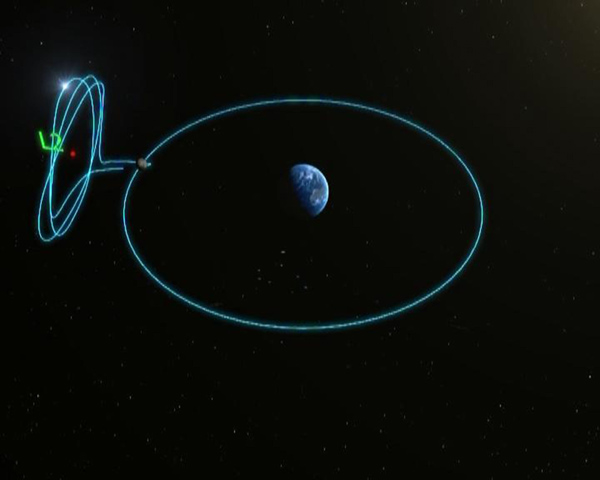Service module of China's lunar orbiter enters moon's orbit
(Xinhua) Updated: 2015-01-11 16:55
 |
|
The photo shows the service module of China's unmanned test lunar orbiter reaching the Earth-Moon second Lagrange Point (L2) in late November and leaving the L2 point on Jan 4 after completing all preset scientific detection tasks.[Photo/Xinhua] |
BEIJING - The service module of China's unmanned test lunar orbiter successfully decelerated, allowing it to enter an 8-hour orbit on Sunday, according to the Beijing Aerospace Control Center.
Following instructions from the center, the service module conducted the braking at around 3 am and entered the 8-hour elliptical moon orbit with a perilune of about 200 km and an apolune of about 5,300 km.
The spacecraft has sustained balanced energy and is in a sound condition, according to the center, adding that the center exercised timely and stable control and tracing of the service module and relevant tests had been carried out smoothly.
The module will make its second and third braking in the early hours of Jan 12 and 13 respectively to enable it to enter the target 127-minute orbit for tests to prepare for the next lunar probe mission, Chang'e-5, said center's chief engineer Zhou Jianliang.
"The first braking is the most crucial," Zhou said. "Precise braking must be performed at perilune to prevent it from flying away from the moon."
The lunar orbiter was launched on Oct 24. The service module was separated from the orbiter's return capsule on Nov 1, which returned to Earth on Nov 1 after circling the moon during its eight-day mission.
The service module reached the Earth-Moon second Lagrange Point (L2) in late November and left the L2 point on Jan 4 after completing all preset scientific detection tasks.
The orbiter is a test run for the final chapter of China's three step lunar program -- orbiting, landing and returning.
The obtaining data and validating re-entry technology will inform the development of Chang'e-5, which is slated for launch around 2017.
- Chinese orbiter staying in space for tests
- Service module of China's returned lunar orbiter reaches L2 point
- China publishes Earth, Moon photos taken by lunar orbiter
- Lunar orbiter's wealth of data to be studied
- China's unmanned lunar orbiter returns home
- Returning lunar orbiter makes skip re-entry
- China launches test return orbiter for lunar mission
- Govt encourages people to work 4.5 days a week
- Action to be taken as HIV cases among students rise
- Debate grows over reproductive rights
- Country's first bishop ordained in 3 years
- China builds Tibetan Buddhism academy in Chengdu
- Authorities require reporting of HIV infections at schools
- Typhoon Soudelor kills 14 in East China
- Police crack down on overseas gambling site
- Debate over death penalty for child traffickers goes on
- Beijing to tighten mail security for war anniversary







